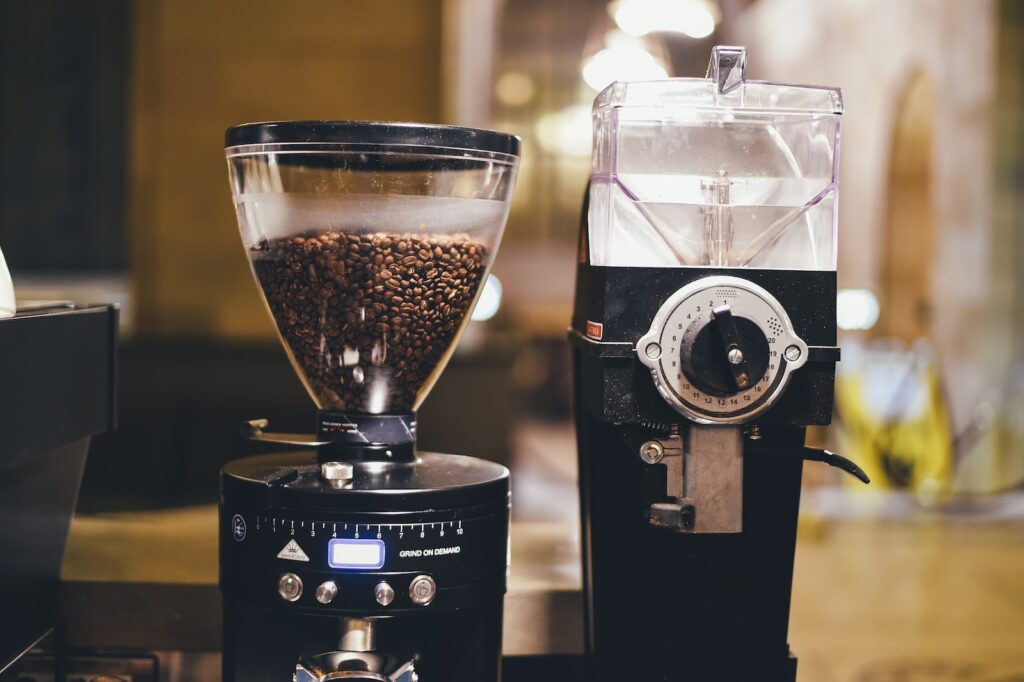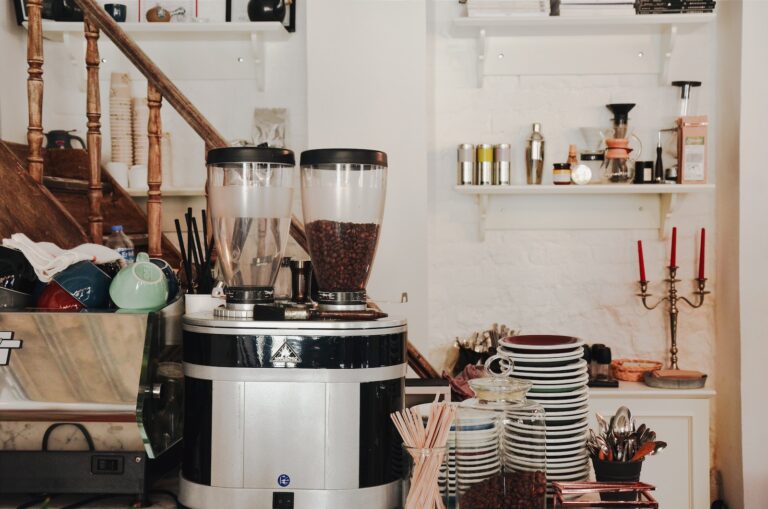Welcome to the world of coffee production, where every aspect of processing is critical in determining the quality and taste of your cup. One crucial element that often gets overlooked is achieving a consistent grind size.
Not only does this affect the extraction process, but it also impacts the flavor profile and overall experience for customers. As a commercial coffee producer, maintaining consistency in your grind size can make all the difference between an average cup and an exceptional one.
So grab your favorite mug and let’s dive into why this aspect deserves attention in your operations!
What is Consistent Grind Size?

If you’re looking to produce consistent-tasting coffee, it’s important to understand the grind size your coffee is ground at. Grind size can affect the flavor and aroma of your coffee, so it’s important to choose a grind size that yields the desired results.
There are three main types of grind: Turkish, French and Italian. Turkish grinds are wider than French and Italian grinds, which allows for a richer flavor and more body. French and Italian grinds are narrower, yielding a more acidic taste and brighter acidity.
To find the perfect grind size for your particular product, start with your water temperature and use our brewing guide to get started. Then experiment with different grind sizes until you find one that produces the flavor you’re looking for.
The Benefits of Consistent Grind Size
Grinding coffee at consistent size results in a more uniform roast. It also improves flavor, because the particles are smaller, and produces a drier cup of coffee. This is why it is important to grind your coffee beans to a consistent size. By doing so, you’re ensuring that all of the beans are roasted the same way and that there will be no negative effects on the flavor or quality of your coffee.
When grinding your beans, use a burr grinder. This type of grinder measures your ground beans’ size by how many passes it makes over the burrs. A conical Burr Grinder is ideal for brewing Turkish-style espressos, while an ultra-fine grinder is perfect for French press coffees or espresso machines with low pressure settings.
When using a burr grinder, start with coarse settings and work your way down to finer ones as needed. Finesse is not necessary when using a burr grinder; in fact, too much finesse can actually lead to inconsistencies in grind size and quality. Instead, strive for consistency by ensuring that you operate the machine in the same manner every time you use it.
The Challenges of Consistent Grind Size
There are a few challenges when consistently grinding coffee size. One is that different beans have different grinds that need to be achieved in order to produce an even extraction. Secondly, different brewing methods call for different grind sizes. Lastly, the size of grind affects the flavor of the coffee and how much caffeine it contains.
To achieve an even extraction, it is important to use a consistent grind size for all of your coffee grounds. This can be difficult to do when using a manual grinder, as each bean has a slightly different grind size. In a commercial setting, it is common to use pre-ground coffee products that have been standardized by weight and measure. However, even these products vary in their grind size because not all beans are the same weight.
Brewing methods also require different grind sizes. French press coffee requires a coarser grind than espresso, for example. Different methods also produce different levels of flavors and caffeine levels in your brews. For example, Turkish-style coffee requires a finer ground coffee since more water is used to create the desired flavored profile.
Lastly, the size of grind also affects the flavor and caffeine level of your coffee. Coarse grounds mean more surface area contact with water which results in more flavor and caffeine release than finely ground beans.
Factors affecting grind size consistency and how to overcome them
There are many factors that can affect grind size consistency in commercial coffee production. Grind size consistency is of particular importance for espresso and manual brewing methods, as the finer the grind, the more consistent flavor and extraction will be. Here are some tips on how to overcome common factors affecting grind size consistency:
- Control of Roasting Temperature: One of the most important factors affecting grind size consistency is the control of roasting temperature. If the roast is too hot, the Coffee becomes harsher and less flavorful resulting in a larger grind size. Conversely, if the roast is too cool, the Coffee will develop a sour flavor and may also be too weak to produce a desired extract. A good starting point for controlling roast temperature is using an espionage thermometer to monitor roasts throughout their entire process.
- Control of Water Temperature: Another key factor affecting grind size consistency is water temperature. Too high of a water temperature can lead to over-extraction, while too low of a water temperature can lead to bitterness or poor flavor. It’s important to properly maintain temperature throughout coffee production by constantly monitoring incoming and outgoing water temperatures. For manual brewing methods such as Chemex and French Presses, it’s also helpful to use a cold-water filtration system so that quality water (around 58°F) is always used for brewing.
- Grain Size Distribution: The grain size distribution plays an important role in influencing overall grind size consistency in commercial coffee production.. Large pieces of coffee beans (e.g. those greater than .8 cm) can cause inconsistencies in the grind size, as they can be more difficult to break down during the brewing process. It’s important to monitor grain size distribution throughout the roasting process in order to ensure consistent results.
- Coffee Variety: Another factor that can affect grind size consistency is the Coffee variety. Different Coffee flowers contain different levels of caffeine, oils, and sweetness which can all have an impact on the grind size and flavor profile. It’s important to select a Coffee variety that is compatible with your desired roast temperature and water temperature profile in order to produce consistent results.
- Level of Equipment Maintenance: Finally, level of equipment maintenance also plays a role in affecting grind size consistency. Poorly maintained machines may result in more inconsistent grind sizes due to wear and tear on café equipment. This can be prevented by regularly cleaning and inspecting all café equipment, particularly pumps and filters.
Understanding the basics of coffee grinding and its impact on flavor extraction
Grinding coffee is one of the most important steps in producing a high-quality cup. Most home users don’t think about it, but the right grind size can make or break the flavor in their coffee. Too coarse, and you’ll get a gritty cup with little flavor extraction. Too fine, and you’ll end up with a weak and watery drink.
The goal is to find a grind size that produces a smooth, consistent cup every time. There are many factors to consider when grinding your coffee, but here are some basics to help you start getting the best flavor from your beans:
Size Matters
The size of your grind will impact both flavor and caffeine levels. Your brew will be stronger with a coarser ground roast, while a finer powder will produce a smoother beverage. Virtually all commercial coffees are ground at least twice – once for brewing and again for storage or shipping – so it’s important to find an ideal grind size for your particular preference.
Techniques for testing and measuring grind size consistency
Commercial coffee production relies on consistent grind size to ensure consistent flavor and extraction. There are a number of techniques for testing and measuring grind size consistency.
One common technique is to use a jig or fixture to measure the circumference of the ground coffee at multiple points across the grinder’s surface. This allows for accurate identification of grind inconsistency and can help mitigate potential flavor issues.
Another technique involves brewing a test batch of coffee using different grind sizes, and then evaluating its flavor profile. This can help identify which grind size produces the best results in terms of flavor and extraction.
Regardless of the technique used, it is important to regularly check Grind Size Consistency in order to maintain quality control in commercial coffee production .
Conclusion
It is often difficult to achieve consistent grind size in commercial coffee production, as the yield and Coffeescript (CS) efficiency of each coffee crop can be highly variable. Those who are trying to produce a consistently great cup of coffee may want to consider using a targeted yield plan and/or a coffeescript optimization program.


4 Comments